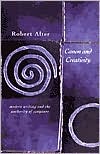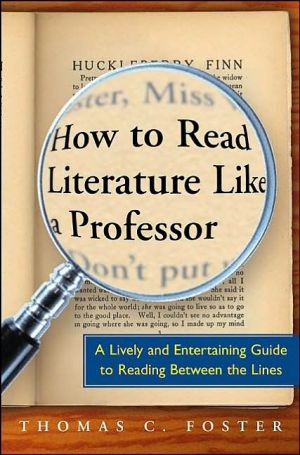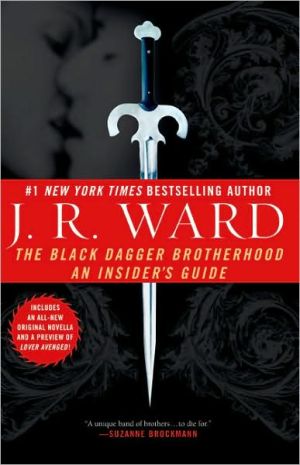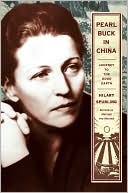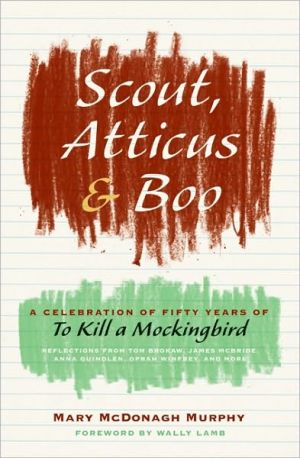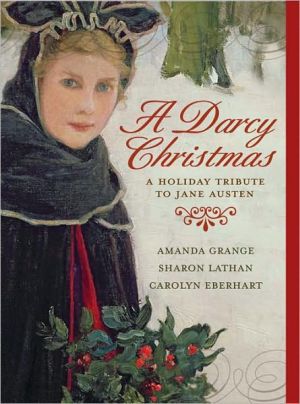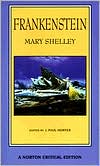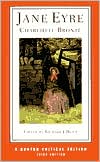Canon and Creativity: Modern Writing and the Authority of Scripture
In this illuminating book, one of our foremost literary critics views the much-debated question of the literary canon from an entirely new angle. Robert Alter explores the ways in which a range of iconoclastic twentieth-century authors have put to use the stories, language, and imagery of the paramount canonical text—the Hebrew Bible. Alter makes a compelling case against the prevalent, pejorative notion of the canon as a vehicle of ideological enforcement. He shows instead that canons by...
Search in google:
Approaching the debates about literary canon from an entirely new angle, a foremost literary critic explores how a range of iconoclastic twentieth-century authors (in particular Kafka, Bialik, and Joyce) have put to use the paramount canonical text—the Hebrew Bible. Robert Alter argues against the notion that the canon is a vehicle of ideological enforcement and shows instead that canons are by nature surprisingly elastic and enabling for later writersChoiceA concise, powerful statement by one of the best contemporary literary critic-scholars.
\ \ \ \ \ Chapter One\ The Double Canonicity of the\ Hebrew Bible\ \ \ \ One might reasonably assume that the Bible provides contemporary cultural criticism with the very paradigm for the idea of a canon. Indeed, as late as 1955, the Oxford English Dictionary, while registering no application whatever of the term to works of secular literature, offers as its only entry relevant to current usage this thoroughly unambiguous definition: "the list of books of the Bible accepted by the Christian Church as genuine and inspired." The Christian character of the canon taken for granted in this definition is worth noting, for, as I shall try to show in detail, the canonicity of the Bible for Jews from late antiquity to the modern era has in part meant something analagous but also rather different. The authoritative certitude fixed in the canon according to this dictionary definition vividly illustrates the tendentiousness in the recent widespread adoption of the term for secular literary works, fostering as it does a tacit notion of a kind of synod of cultural authorities who have dictated a list of "genuine and inspired" writers, excluding proponents of the wrong ideological or aesthetic bent or the wrong gender or ethnicity. In fact, the reasons why certain works become popular beyond their own times and are anthologized, reprinted, cherished by readers, even included in curricula, are more complicated, more fluid, and more interestingly multifarious than the ecclesiastical model of a canon suggests. But the canonicity of the Hebrew Bible itself proves to be, on closer consideration, moreambiguous, and also more overdetermined, than is allowed by this idea of a list of genuine and inspired works.\ We have only an imperfect, highly inferential notion of how the canonization of Hebrew Scriptures actually took place — apparently, by stages — among Jews sometime around the turn of the Christian era. The talmudic account of a kind of parliamentary vote on a list of canonical works by the Sanhedrin on a single day in Yavneh in 90 C.E. has been questioned by recent scholars and may well be a schematization of a more complicated historical process. The Torah was evidently accepted as canonical by the time of Ezra the Scribe (later sixth century B.C.E.), for he could not have prescribed its reading as a public ritual without assuming, or at any rate effectively imposing, such acceptance (though we have no way of being sure that the Torah he decreed for reading was textually identical with that of later tradition). The Prophets, including the narrative books designated the Former Prophets, appear to have become canonical over the next four centuries, as evidence from the Dead Sea Scrolls and elsewhere suggests. So far so good, a proponent of the idea of canon as a list of genuine and inspired books might say. The Torah, after all, gives us an account of the origins of the world, the formation of the people of Israel, and its divine election and redemption from slavery, together with the body of laws — moral, civil, and cultic — that is to govern it. The Former Prophets continue the story of God's covenanted people to the end of the First Commonwealth. The Latter Prophets explicitly represent themselves as carriers of God's message to Israel (the so-called messenger formula, "thus saith the Lord," is often invoked in their writings), articulating in a new way the moral implications of the Covenant and making a set of assertions about the future course of history.\ The third large unit, however, of what became the Hebrew Bible, the miscellaneous Writings (Ketuvim,) raises questions about any clear-cut ideological or theological criteria for the constitution of the canon. The Writings include, after all: a kind of carnivalesque political fairy tale in which God's name is never mentioned (Esther); a profound challenge to traditional notions of divine justice and reward and punishment that concludes with a radical revision of the anthropocentric vision of creation in Genesis (Job); an exuberantly sensual celebration of the pleasures of young — and evidently unmarried — love, again with no mention of God (the Song of Songs); a brooding series of poetic-philosophic reflections on the futility of all human endeavor and desire and the leveling prospect of cyclical recurrence in all things (Ecclesiastes). How did such wayward or nearly heretical texts come to be part of the Hebrew Bible? A provisional answer may help us understand more clearly the role played in the cultural life of later Jews, and perhaps not just Jews, not only by these "problematic" books but by the entire Hebrew Bible, and may give us a clearer notion of how canons in general are made.\ Let me begin by observing a rudimentary fact that has had more far-reaching consequences than is generally realized: the Jews, from late antiquity to relatively recent times, read the Bible, unlike all other peoples, in the original Hebrew. There are some significant exceptions to this rule. The Hellenized Jewish community of Alexandria in the last centuries of the pre-Christian era seems to have been dependent on the Greek translation of the Bible. The wide dissemination of the Aramaic Targums (paraphrastic translations read aloud in synagogues together with the Hebrew originals) in the early Christian era is a clear indication that large numbers of Jews, in a time and place when Aramaic had displaced Hebrew as the vernacular, needed a translation, at least as a pony for understanding the original. It would be extravagant, moreover, to imagine that the educational system at any time or place in the history of the Diaspora produced universal literate comprehension of Hebrew among Jewish males. It is likely that quite typically an ordinary person would end up only with a dependable ability to sound out the Hebrew letters on the page and identify the meanings of some primary items of vocabulary. Nevertheless, anyone who could be considered truly educated in traditional Jewish society would have been intimately familiar with the Bible in its original language; and indeed, though after the first few years of schooling the curriculum centered on the Talmud, not the Bible, there is considerable literary evidence that a nearly verbatim recall of the entire Hebrew Bible was by no means an unusual accomplishment. (One might think of the analogy of Russian culture, in which many educated people managed to get much of Pushkin by heart.) The group that achieved Hebrew literacy may have been an elite, but it was by no means a tiny one. My guess is that the proportion of the male Jewish population in eleventh-century Andalusia or eighteenth-century Lithuania that could read Genesis and Job in the original easily exceeded the proportion of people in eighteenth-century English society who read Virgil in the original, at a time when English poetry was modeled on Augustan verse.\ It is obvious that a great work of literature can have a profound effect on readers in translation, as the enormous impact of Homer, Dante, and Shakespeare in many languages demonstrates. But it is equally obvious that the tonalities, the associations, the order of imaginative authority, shift, usually with some palpable diminution, when a work manifesting great verbal mastery is transferred from one language to another. Such shifts are particularly drastic in the case of the Hebrew Bible because most of the languages into which it has been translated are so different from Hebrew in structure, idiom, sound, and semantic coloration. The effect of reading the Bible in its original language is, I think, paramount in the inclusion in the canon of the four books I have mentioned that ended up in the miscellaneous Writings. Apart from any considerations of ideology, if the Jews of late antiquity had read these texts in Greek or Aramaic, I think it is rather unlikely that they would have felt impelled to put them in the Bible.\ Why would a book that either rejects doctrinal consensus or pays no attention to doctrine be taken into the supposedly doctrinal canon? The two most plausible explanations — literary power and sheer popularity — in part overlap, in part complement each other. Both Esther and the Song of Songs are self-evidently popular works. Esther would have had wide appeal because it provided the rationale for a new, attractively festive holiday, Purim, while playing on feelings of national pride and solidarity in an inventive satiric narrative. Neither of these considerations is related to the language in which the story is written. The liveliness of the tale, however, is strikingly enhanced by the Hebrew in which it is conveyed, with its playfulness, its puns, its descriptive vividness so different from earlier Hebrew prose, and its colorful borrowings from the Persian. (Such considerations at first carried little weight in some pietistic circles: the absence of any fragment of Esther from Qumran — the only biblical book not represented in the library of the Dead Sea sectarians — suggests that as late as the first or second century B.C.E. there were groups that rejected its canonicity.) The popular character of the Song of Songs is attested by the early rabbinic objection in the Tosefta (Sanhedrin 12:10) to a common practice of singing it, with plainly erotic intention, in places of public revelry. But the popular attraction of the Song surely derives not merely from its subject — the wasteland of the extracanonical through the ages is littered with erotica-but from its extraordinary poetic vehicle, which in the lushness of its imagery, its subtle musicality, its sense of drama, its fusion of delicate sensuality and verbal wit, turns biblical Hebrew into an instrument of enchantment.\ The other two problem-books, Job and Ecclesiastes, raise the question of ideology and canon more directly because both are philosophic challenges to views generally accepted in the dominant body of beliefs of ancient Israel. It is not unreasonable to surmise that the very profundity of the challenges — a profundity that would have spoken to an intellectual elite more than to a popular audience — arrested the attention of certain Hebrew readers and drove them to argue for the inclusion of these texts in the canon. If that was in fact the case, it would indicate that ideological consensus among the makers of the Jewish canon was less a matter of party-line agreement than one might imagine, that the canon makers were willing to tolerate a certain spectrum of outlooks, or perhaps felt that it was salutary for the consecrated literature to incorporate some dialectic elements of autocritique. But an equally important aspect of the appeal of both these books is their unique power as instances of literary Hebrew, a power that manifestly focuses the boldness of the philosophic critique they articulate. The metaphoric vigor of the poetry of Job, its stunning ability to inscribe pain and outrage and cosmic vision in taut, muscular language, give it an awesome intensity of a kind attained by only a few other works — Oedipus the King, The Inferno, King Lear, perhaps a few poems of Celan's — in the whole Western poetic tradition. Ecclesiastes, moving back and forth between highly rhythmic prose and passages of poetry, is a haunting evocation of the hazy insubstantiality of ambition and hope that has a mesmerizing effect in the Hebrew because of its echoing cadences, verse after verse registering in sound the writer's underlying sense that all things are wearyingly repeated in an endless cycle of futility.\ I don't mean to propose that ultimately what the Hebrew Bible represents is the twenty-four best-selling books of ancient Hebrew literature. The limits of the canon were, after all, defined by a system of belief, even if it was in a few respects surprisingly flexible, and there doubtless were works composed in Hebrew in the biblical period that had no chance of admission to the canon because they stood outside the system, or addressed concerns entirely irrelevant to it, even by way of challenge. (We have no way of knowing the nature of the lost books mentioned in the Bible: the Book of Yashar, the Book of the Battles of YHWH, the Chronicles of the Kings of Judea, and the Chronicles of the Kings of Israel. Perhaps the first two were deemed too mythical in character for retention even in the precanonical stage of anthologizing the national literature, and the last two may have expressed too limited a dynastic view of historical events.) Nevertheless, the stylistic and imaginative authority of the works that became canonical must have played a role in the desire to preserve them in the national legacy — and, conversely, it seems plausible that there were Hebrew texts excluded from the canon not for doctrinal reasons but because they were inferior as works of literature. The soaring, and searing, poetry of Job, the lovely lyricism of the Song of Songs, were so keenly appreciated by the ancient audience that it was unwilling to have them lost to posterity, for all the theological radicalism of the former and the sensual secularity of the latter.\ The case, moreover, was not fundamentally different for ancient Hebrew texts that posed no challenge to doctrine. Genesis might be thought of as a perfectly "orthodox" work, authoritatively defining the hierarchy of creation and the election of Israel, but it is also one of the supreme achievements of narrative art in all of ancient literature, on the level of style, story, dialogue, and the complex representation of character and theme. The Hebrew audience in the Second Commonwealth period no doubt readily assented to the canonical status of the redacted text we call Genesis because it consciously viewed the book as a veracious report of creation and national origins, but it is hard to imagine that the ancient audience did not also respond with deep approbation to the brilliant literary artistry of the book (which surely was not exercised by the authors and editors merely for their own amusement, in disregard of any audience). This double responsiveness to Scripture read in the richness of its original language has continued to manifest itself in the Jewish relation to the Bible through the ages. The nearly ubiquitous presence of allusions to the Bible in postbiblical Hebrew literature is a major index of this binocular vision of the Bible: the allusions occur because the Bible provides later Hebrew writers a thick concordance of phrases, motifs, and symbols that encode a set of theological, historical, and national values (a canon in the strict sense of the O.E.D.); and the allusions occur, as I shall try to show, because the Bible in Hebrew speaks resonantly, even to the most pious readers, as a collection of great works of literature.\ The history of English literature from the seventeenth century affords an approximate but instructive parallel to this phenomenon. The magisterial achievement of the King James Version (whatever its imperfections and its inaccuracies) profoundly impressed itself not only on the community of the pious but on most of those who wrote literature. English literary style as it evolved is scarcely imaginable without reference to the King James Version. It is deeply imprinted not only in the language of such intently religious poets as George Herbert and Emily Dickenson but also in writers beyond the pale of traditional belief as different from each other as Hemingway, Joyce, and D. H. Lawrence.\ The persistent power of this second, literary canonicity for readers of the Hebrew Bible, including those in ages dominated by doctrine, helps explain one of the great enigmas of Jewish cultural history — the dramatic rebirth of a secular literature in Hebrew, twice: first in late-tenth-century Spain, initiating a rich and varied tradition that would continue down to eighteenth-century Italy, and then in Central and Eastern Europe, beginning falteringly in Enlightenment Prussia and reaching artistic maturity in Russia toward the end of the nineteenth century. A necessary condition of the first of these rebirths was a conscious return of the Andalusian Hebrew poets to the language of the Bible, in competitive imitation of the Arabic poets who vaunted the purity of Quranic style of their verse. Literary historians often represent this biblicizing impulse of the Andalusian poets as chiefly a linguistic undertaking: with a clarity of understanding derived from the new Semitic philology of the era, the poets could cut away the grammatical and morphological excrescences of antecedent liturgical poetry, go back to the precision of biblical usages, and mine the Bible for vocabulary and idiom. Although all this is true, what is equally impressive is the way they evince in poem after poem a subtle responsiveness to the literary artistry and the imaginative worlds of the biblical writers. The celebration of nature, the expression of physical passion, the articulation of loneliness and personal loss, the broodings on mortality and the ephemerality of all things in this extraordinary body of secular poetry would be inconceivable without the poets' profound imaginative experience of Psalms, the Song of Songs, Job, Ecclesiastes, Proverbs, and other biblical texts as works of literature.\ What I want to stress is that this sort of imaginative experience of Scripture did not suddenly begin in tenth- and eleventh-century Córdoba and Granada and Seville because members of the Jewish cultural elite there picked up from the surrounding high Arab culture a newfangled notion of secular literary expression. Even in periods when Jews had no option at all of secular cultural activity, the evidence of what they composed in Hebrew argues that they never ceased to respond to the literary dimension of the Bible, however fervently they saw it in doctrinal or theological terms. The double canonicity of the Song of Songs is a particularly instructive instance of this general phenomenon. As is well known, the Song's reveling in the pleasures of love was elevated to canonical acceptability through allegorical interpretation — in the Jewish treatment, by reading the lover as the Holy One and the beloved as His bride, the Community of Israel. Imaginative energy was lavished on this allegory through the centuries and, far from being an arid scheme, it became deeply moving for countless Jews, as liturgical, mystical, and homiletic texts bear witness. (The classical Kabbalah would have been immeasurably diminished without it.) Judah Halevi (1075? — c. 1141), perhaps the greatest poet of the Spanish period, could use the allegory quite poignantly in some of his liturgical poems by boldly reviving the frank eroticism of the Song in his representation of Israel's relationship with God.\ But Hebrew readers, however piously they accepted the allegorical interpretation, could scarcely forget that the Song of Songs was a collection of love poems; and so even in the period before the Andalusian renascence, one finds pointed allusions to the Song in Hebrew epithalamia, poems composed to celebrate the unions of flesh-and-blood brides and grooms. Even the liturgical chanting of the Song had a double justification. The synagogal recitation was fixed for the Sabbath of Passover. Because Passover celebrates the exodus from Egypt, the doctrinal warrant for the linking of the Song with this holiday would be the wilderness phase of the nation's history, which in the allegorical scheme corresponds to the period of honeymoon intimacy between God and Israel His bride (compare the bridal metaphor in Jeremiah 2:2). But Passover is also a spring festival, and the evocation of the beauty of the vernal landscape in the Song of Songs was surely not lost on the framers of the liturgy, even if they were often inclined to obscure the connection between spring and the delights of young love in these poems.\ Here are the first five lines of an anonymous alphabetic acrostic composed in Palestine sometime in the Byzantine period and intended for use in the Passover liturgy. The repeated farewell that is bid to the rain is not only a mark of the end of the rainy season in Palestine during the month of April but a formal prelude to the prayer for dew, invoked in the alternating refrain, that is inserted in the Passover service.\ \ \ Let me utter song as the songbird's season comes,\ and I shall call out in song: go in peace,\ O rain.\ On the deeds of my Rock let me look, they are\ sweet in their season,\ and sweetly shall I speak: come in peace,\ O dew.\ The rain has gone, the winter's past,\ and all is new-minted in beauty: go in peace,\ O rain.\ Mandrakes give off their scent in the lovers'\ garden,\ and cares are gone: come in peace, O dew.\ The earth is crowned with grain and wine,\ every creature shouts: go in peace, O rain.\ \ \ \ Here, at the heart of the holiday liturgy, the poetry of nature and love of the Song of Songs comes to life again in the evocative play of allusions of the paytan, the anonymous liturgical poet. In this setting of public worship, he duly praises "the deeds of my Rock," which are not invoked in the biblical Song, but God's wondrous acts are manifested in these lines in the vernal freshness of nature, the passing of the rainy season, the lovers' garden — in the Song it is both a metaphor for the woman's body and the couple's trysting place. The language of the paytan is a supple interweave of his own formulations with phrases from the Song of Songs, liberated from the vehicle of allegory — "the songbird's season comes," "The rain has gone, the winter's past," "Mandrakes give off their scent." A small but instructive measure of the poet's relation to his biblical source is his deployment of soundplay in the fourth line. In the acrostic scheme, the line begins with daleth, the fourth letter of the Hebrew alphabet; the poet highlights the prominence of the initial consonant by reproducing a lovely pun from the Song and then trumping it. The Hebrew for "mandrakes" is duda'im, a supposedly aphrodisiac fruit matched in sound and meaning with dodim, "lovers" (this plural form of the noun also means "lovemaking"). To this biblical pun, the poet adds, in the next part of the line, the vanishing of "cares," deva'im. This last little move is not one he would have made were he not reading the Song with a careful eye to its poetic craft. A Hebrew poet himself, he observes with great nicety the harmonious orchestration of delicate poetic effects in the Song, and he gives evidence of having in effect asked himself: how can I use this beautiful material, make it part of my own idiom, even go it one better? None of this calls into question the liturgical poet's acceptance of the Song of Songs as a "genuine and inspired book," in all likelihood with the sublimation of human love into theological allegory as the proof of its inspired status. But it was also canonical for him in the same way that Shakespeare was canonical for Keats or Blake for Yeats — as one of the luminous poetic achievements in his language that could both kindle his imagination of the world and suggest to him a set of technical resources.\ When secular Hebrew poetry experiences its astounding rebirth in Spain a few centuries later, the range of allusive relation to the biblical texts becomes much broader, with specific instances of allusion often proving to be remarkably subtle, inventive, and sometimes quite startling. Some of the more broad-gauge invocations of biblical models are of a sort familiar in other literatures. Just as the blind Milton could associate his plight, cast among the new Philistines of the Restoration, with that of the blind Samson, Solomon ibn Gabirol (1021-1050s), shunned by many of his fellow Jews for his mystical beliefs and suffering from tuberculosis of the skin, repeatedly identified his painful destiny with that of Job. A writer may read Scripture as a purely doctrinal canon and yet allow himself such personal identifications. Indeed, he may want to give a large theological-historical resonance to his own experience precisely through this sort of identification, as did Samuel Hanagid (993-1056), who as vizier of Granada and commander of its army, saw himself as a second David, and composed two striking victory poems after leading his forces in military triumph, each with 150 lines, the number of Psalms in the canonical collection.\ (Continues...)
\ ChoiceA concise, powerful statement by one of the best contemporary literary critic-scholars.\ \ \ \ \ Publishers Weekly\ - Publisher's Weekly\ In an impressive display of literary acuity, veteran UC-Berkeley critic Alter (The Art of Biblical Narrative, etc.) studies the works of three modernist writers while also reexamining the notion of canon. Much of Alter's attention in recent years has been devoted to biblical study, and here he brings his deep knowledge of the biblical text to bear in looking at three works, two familiar to most readers (Kafka's Amerika and Joyce's Ulysses) and a third a more surprising but also gratifying choice (the lengthy poem "The Dead of the Desert" by the great Hebrew-language poet Haim Nahman Bialik, with the entire text in translation reprinted here). Alter argues that for these three writers the Bible did indeed serve as a canon but not in the traditional sense of a "sealed corpus of texts that is the source of all authority and... truths," but rather in a literary fashion as a "luminous poetic achievement," a rich field of language, images and motifs to be exploited. For Joyce, for instance, the Bible is a foundational text along with the Odyssey, yet he treats it not as a sacred text but as a "textual residue, part of the flotsam and jetsam of modern culture," little bits and strands of which appear in various characters' stream-of-consciousness. In arguing that the literary canon is more "quirky and various" than most people admit, Alter concludes that the biblical canon as well "is by no means the simple and assured phenomenon of enshrining doctrine in text," admitting such contrary points of view as those of Job and Ecclesiastes. This book will appeal only to the lit-crit crowd and to readers interested in the impact of religion on the arts and culture, but for such readers, it displays a dazzling ability to interpret texts, both ancient and modern. (Oct.) Copyright 2000 Cahners Business Information.\ \ \ Library JournalAlter (Hebrew and comparative literature, Berkeley; Necessary Angels) discusses the biblical canon (and the nature of literary canonical writing) as an open system for change and imaginative response. He shows how postbiblical Hebrew writers Ibn Gabirol (1021-1050s), Samuel HaNagid (993-1056), Judah Halevi (1075?-c.1141), Haim Nahman Bialik (1873-1934), and Saul Tchernikhovsky (1875-1943) used intertextuality to bring new insight to canonic ideas. Alter's profound reading of Bialik's poem "The Dead of the Desert" stresses the modern mythological use of biblical themes. Franz Kafka's Amerika is described as a modern retelling of the Joseph and Exodus stories, while James Joyce's Ulysses is read as various allusions to the Bible and Homer's Odyssey, among myriad other texts. The author shows special insight into Joyce's comic use of the Bible. Alter has written a convincing short book describing the nonideological nature of canon formation and its divergent use by very different imaginative writers. Recommended for literature collections.--Gene Shaw, NYPL Copyright 2000 Cahners Business Information.\ \ \ \ \ Esther H. SchorAlter's slim Canon and Creativity (based in part on his 1999 Rosenzweig lectures at Yale) supplies a brilliant counterreading of Jewish modernism. In elegant essays on Kafka and Bialik, Alter, a professor of Hebrew and comparative literature at the University of California, Berkeley, identifies ''an impulse to displace entirely the doctrinal canonicity of the Bible with its literary canonicity.''\ New York Times Book Review\ \ \ \ \ Kirkus ReviewsAlter (Hebrew and Comparative Lit/Berkeley) expands his ongoing study of the literature of the Hebrew Bible with an examination of the Old Testament's influence on three towering literary works. In the strictest sense of the Word, of course, the truest canon is the Bible. Quite apart from its theology, its poetry and narrative constitute the founding text for much—if not most—of the West's best literature, and scriptural diction, images, and stories have informed creative writing for literally thousands of years. In order to enlarge our appreciation of the Bible and remind us of its source, Alter reverts here to a consideration of the original (and remarkably expressive) Hebrew. This is especially pertinent in his study of Haim Nahman Bialik's mythic poem"The Dead of the Desert," written originally in Hebrew using Biblical diction and vocabulary to produce a powerful story—one more in the mood of a lost chapter of the Gilgamish epic than anything ecclesiastical. In Kafka's Amerika, Alter finds parallels to Genesis and (especially) Exodus—despite wide and peculiar spins involving hero Karl's adventures in New York and Oklahoma. (One is tempted to ask if it isn't possible, somehow, to find echoes of Joseph in every story of a youngster far from home, or whether every author's concupiscent female eyeballing an inexperienced lad isn't a descendant of Potiphar's wife.) Of course, Joyce's Ulysses is explicitly Homeric—but Alter would discern an equivalent relationship to the Hebrew Bible, asserting that Joyce used both texts as a combined foundation for his mighty novel. Certainly a devoted analysis of Ulyssescanuncover myriad sources, but this makes a strong case for the Bible as a significant Joycean wellspring. A short, cogent exercise in literary criticism that provides some erudite free play with Scripture.\ \
